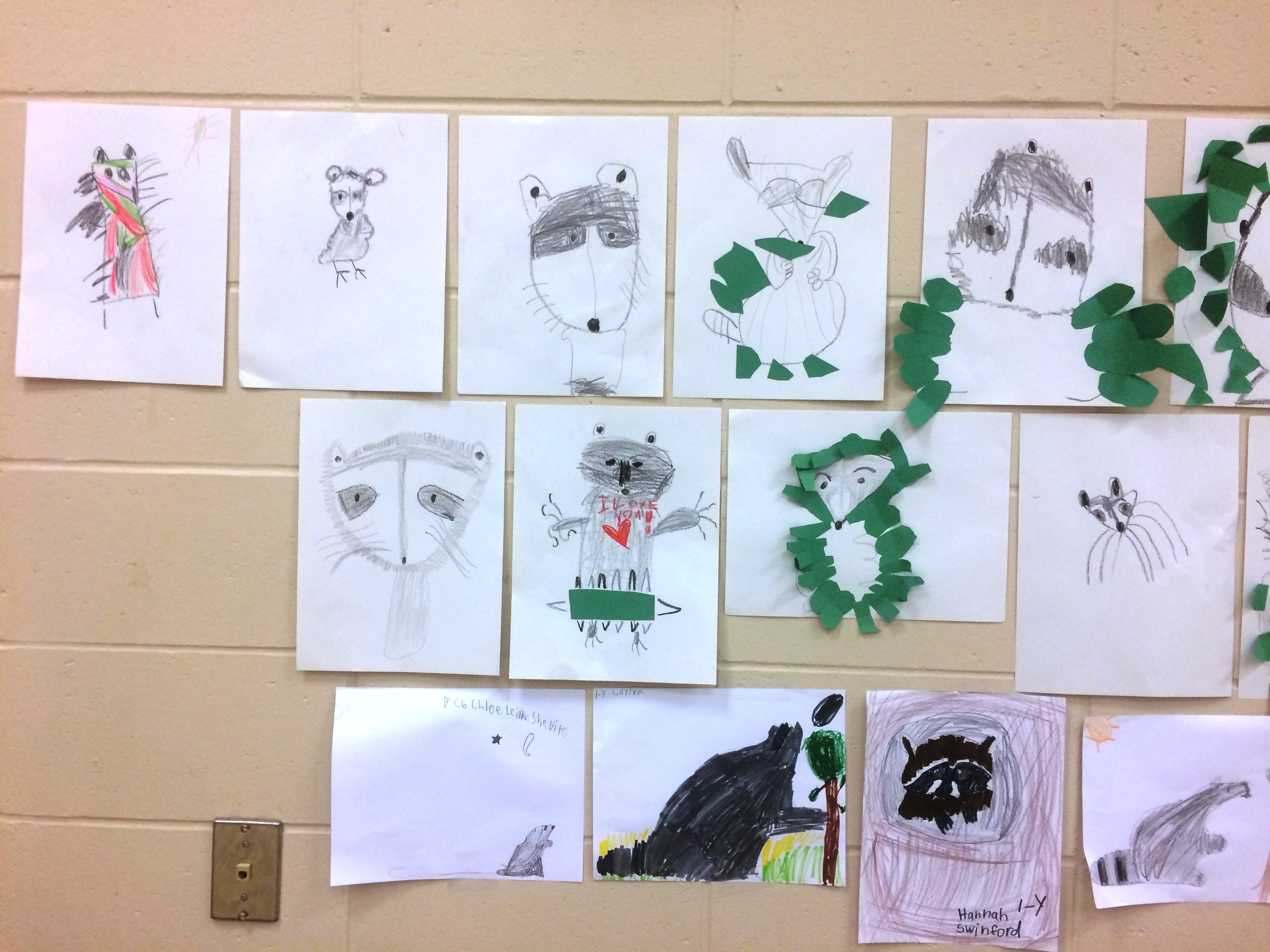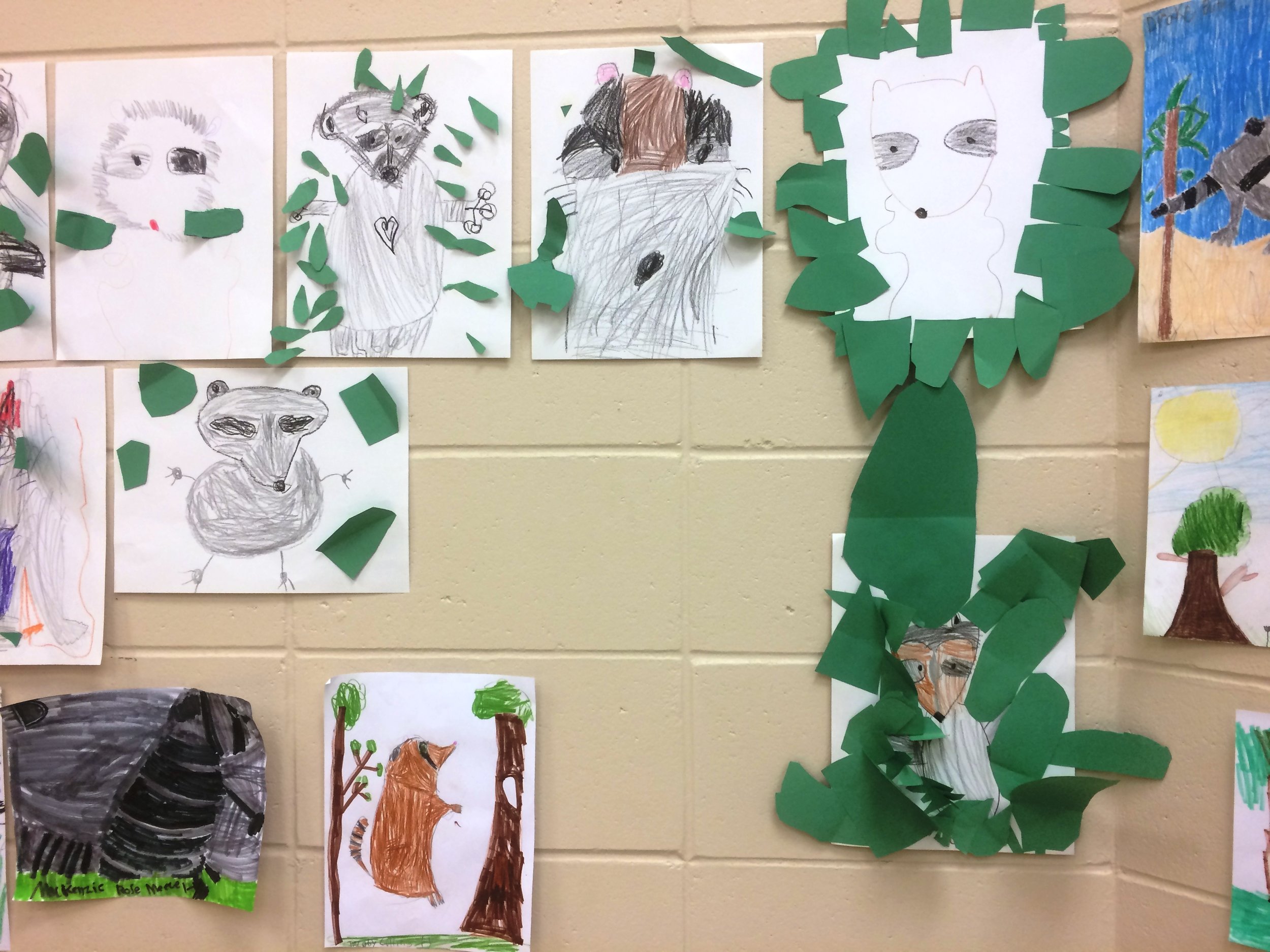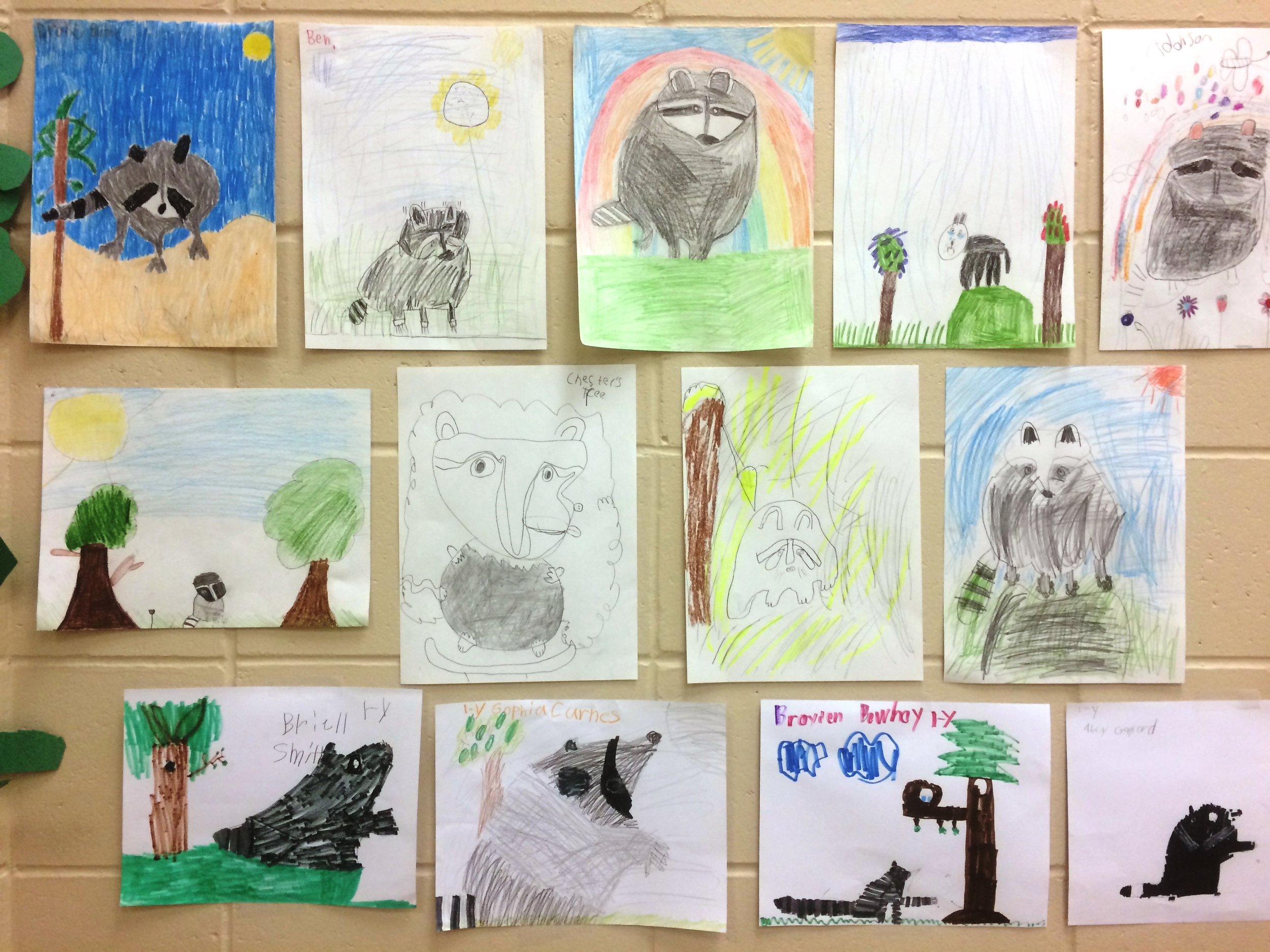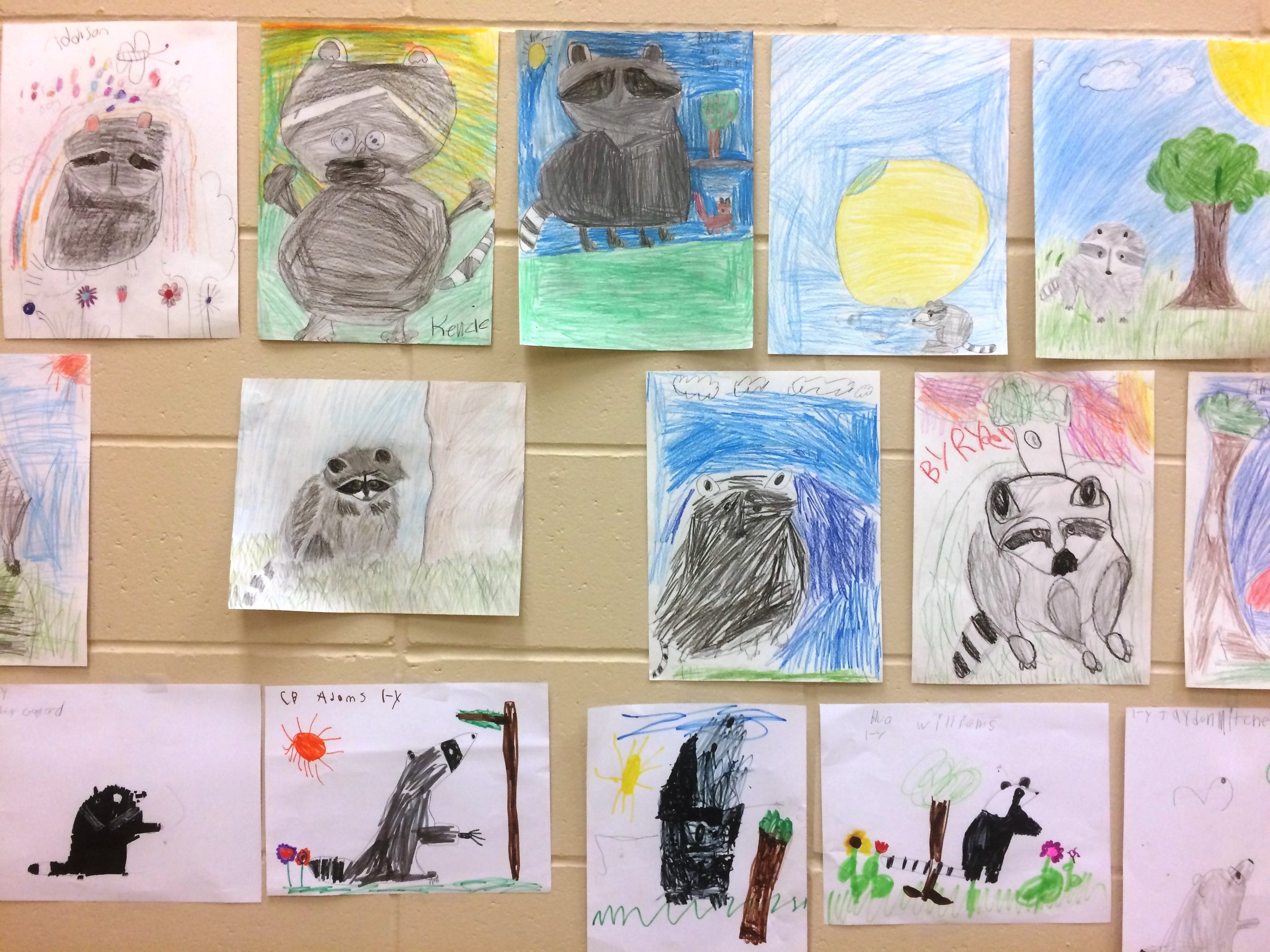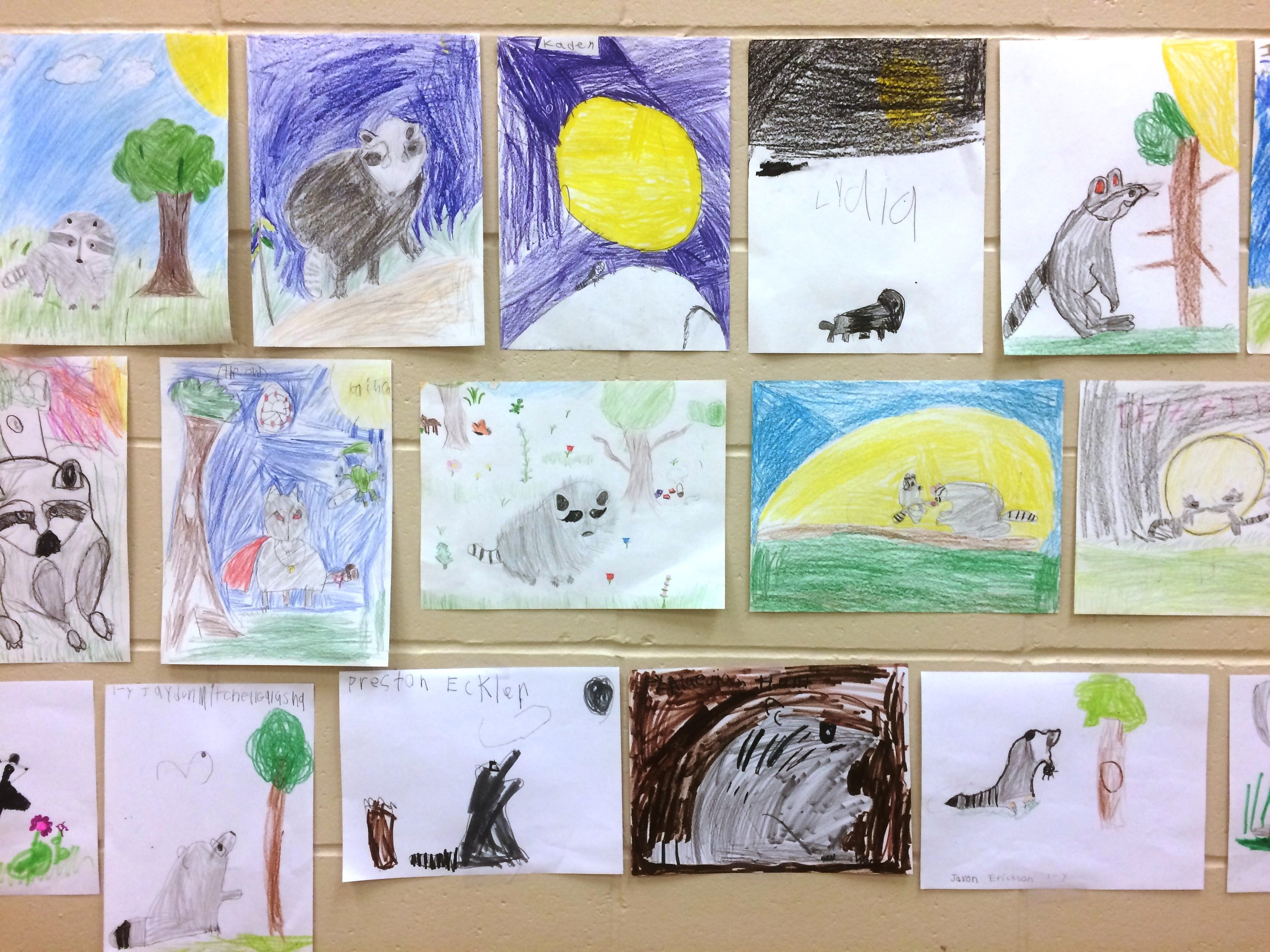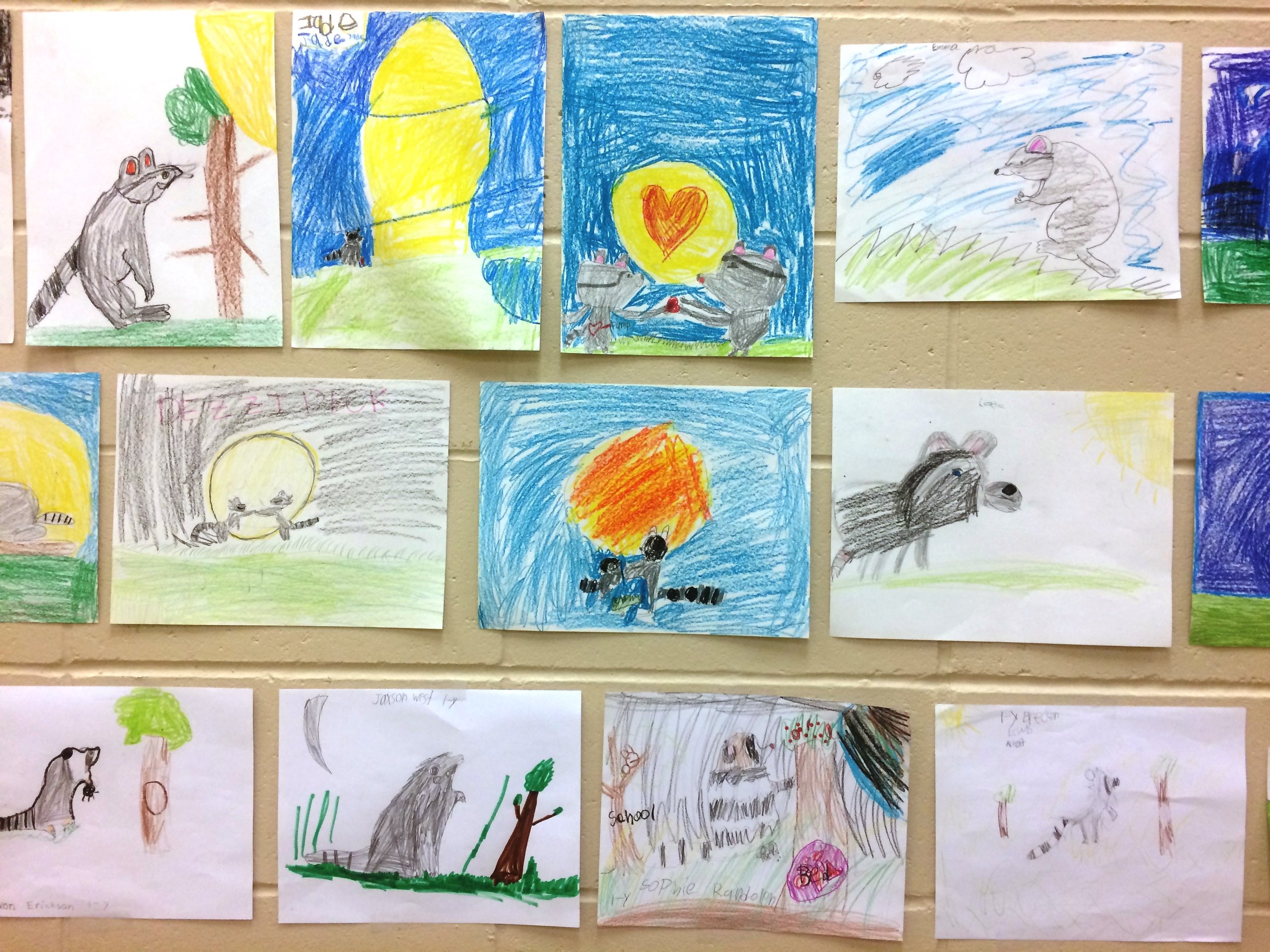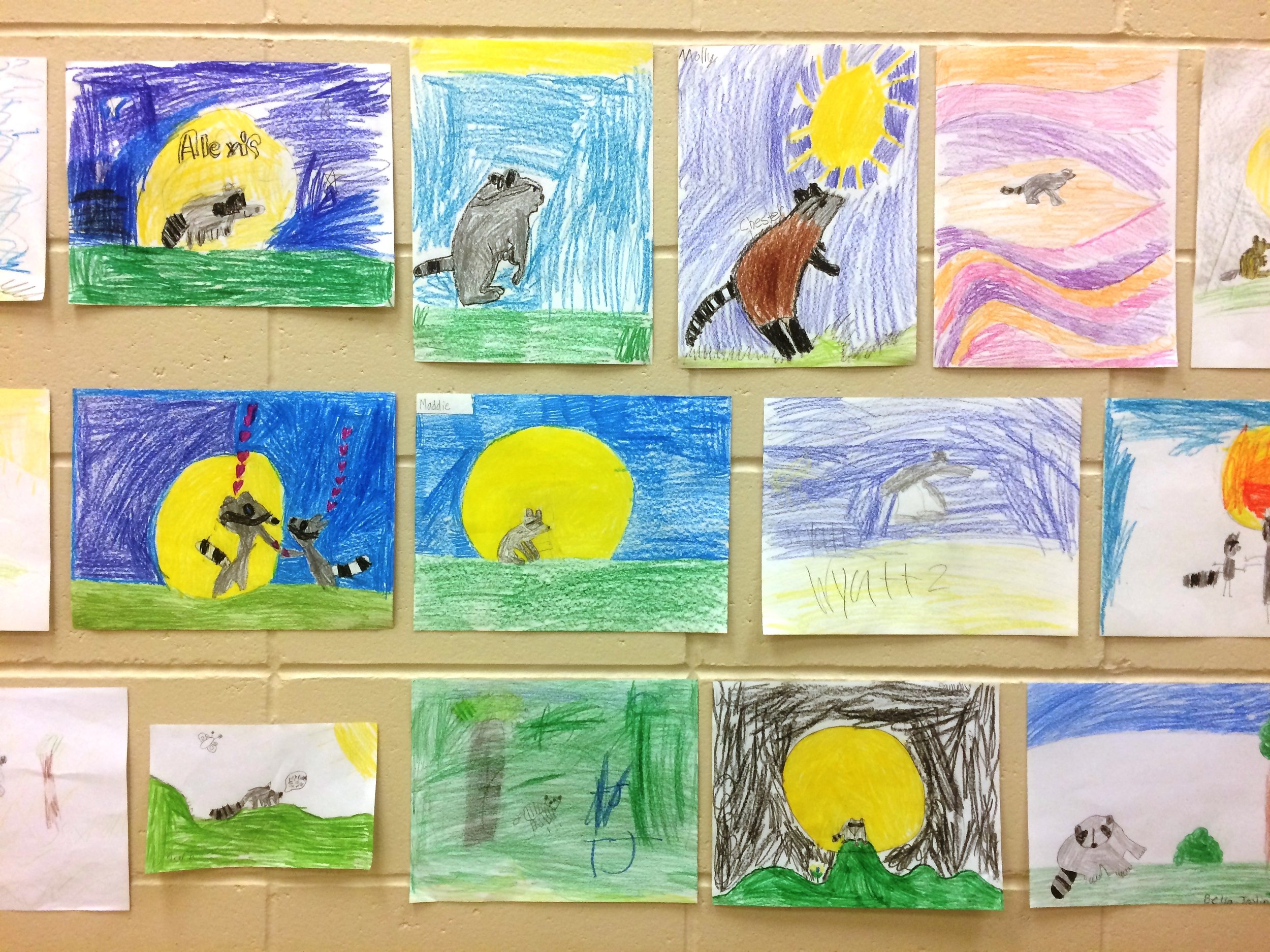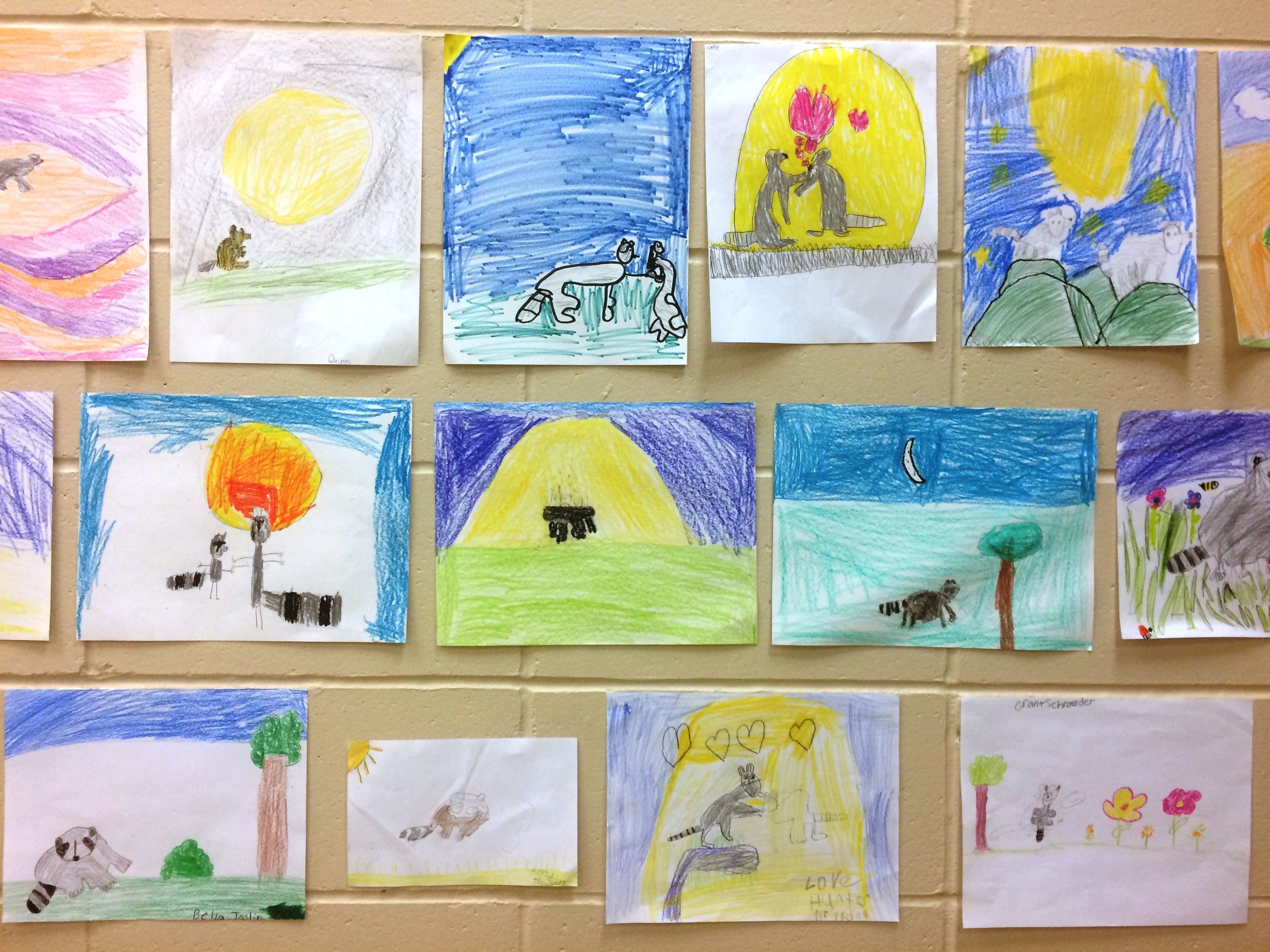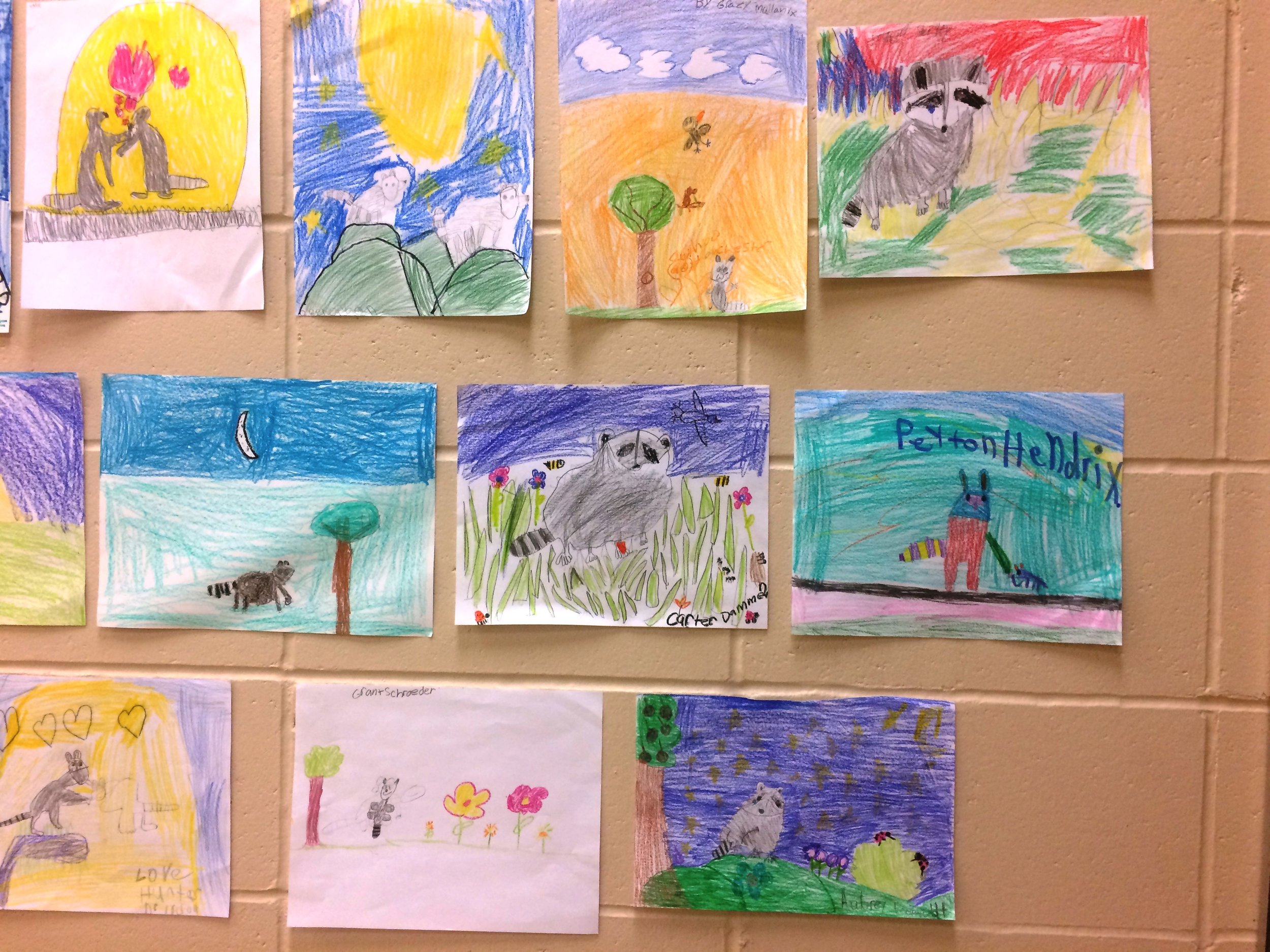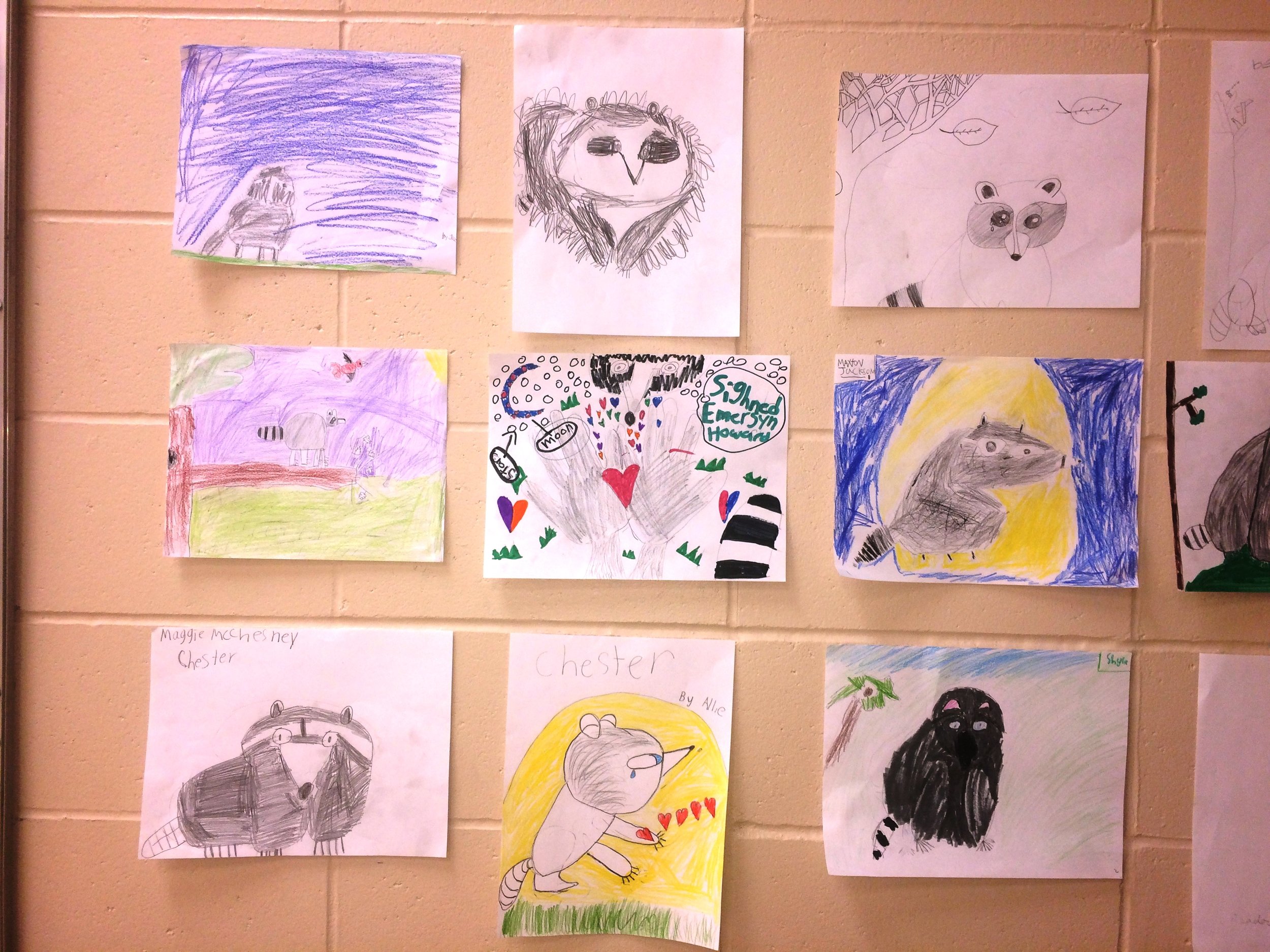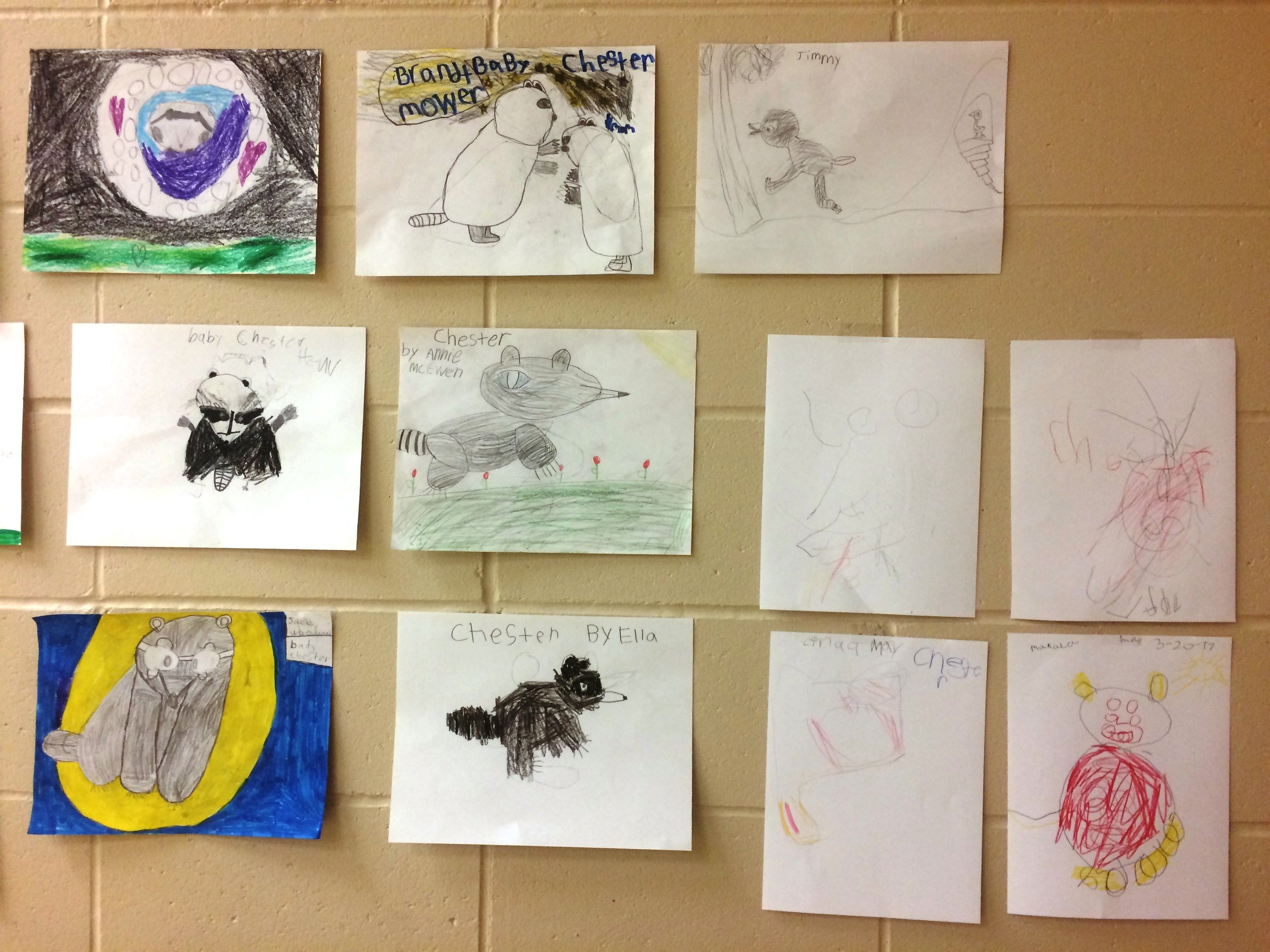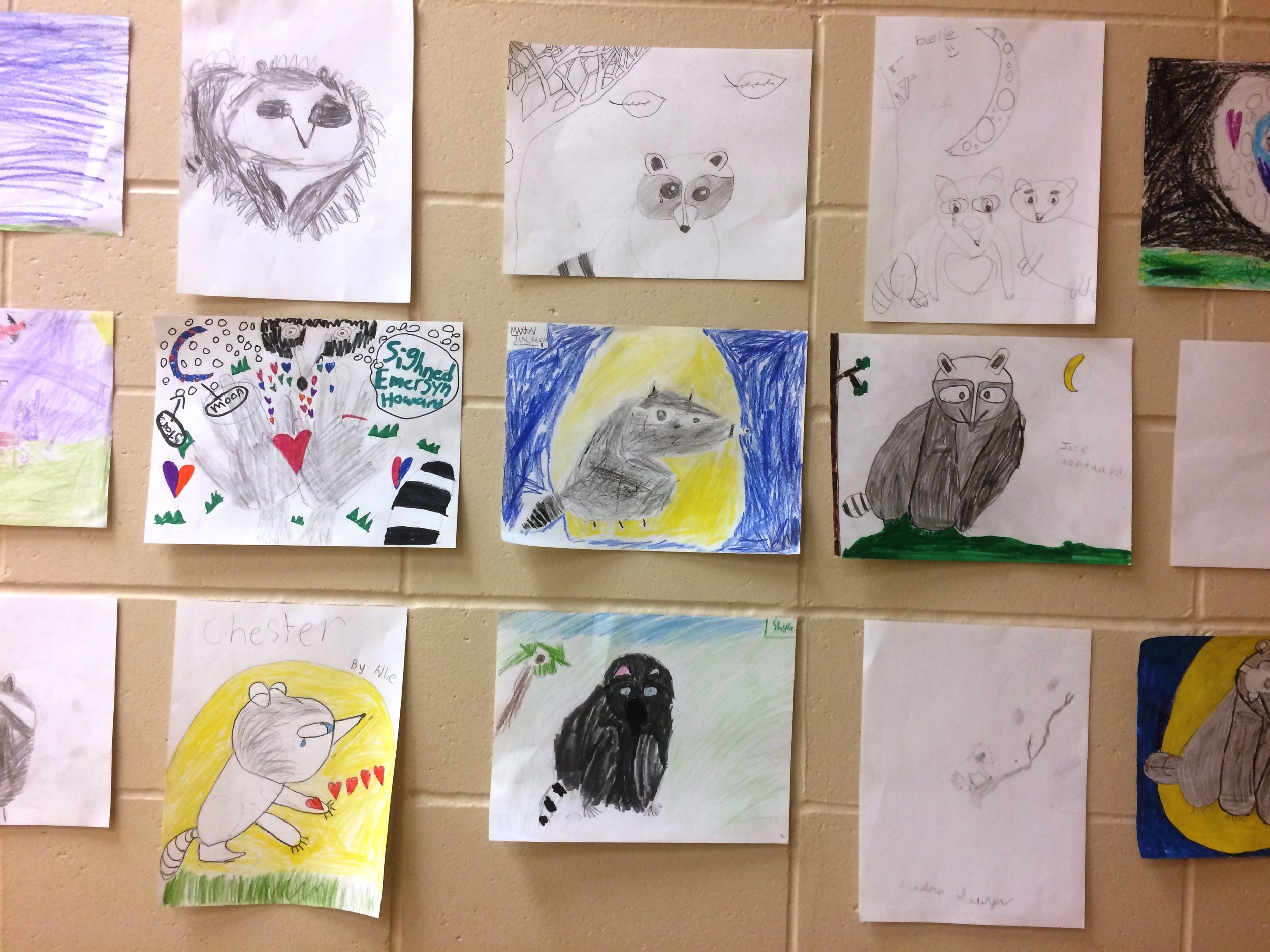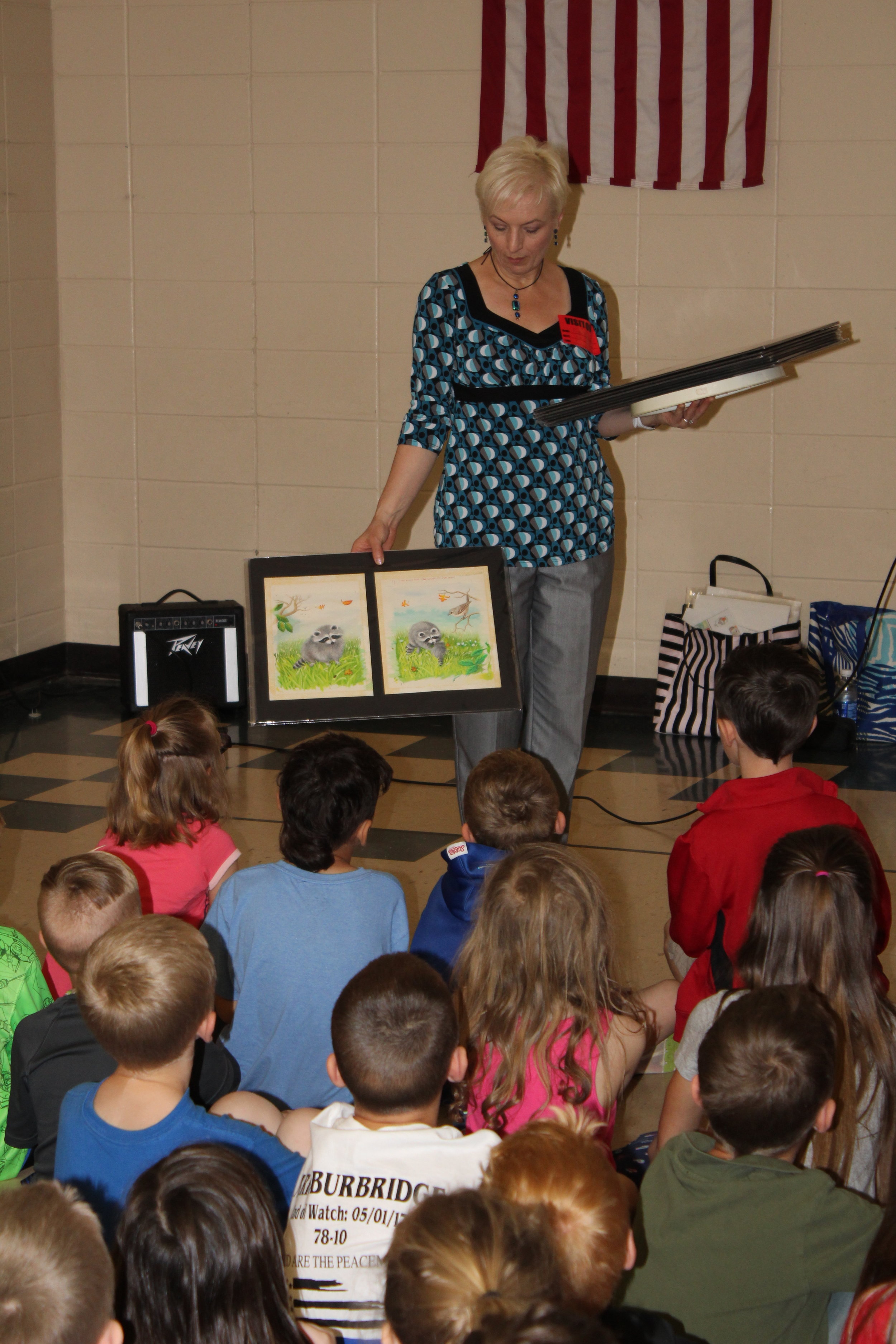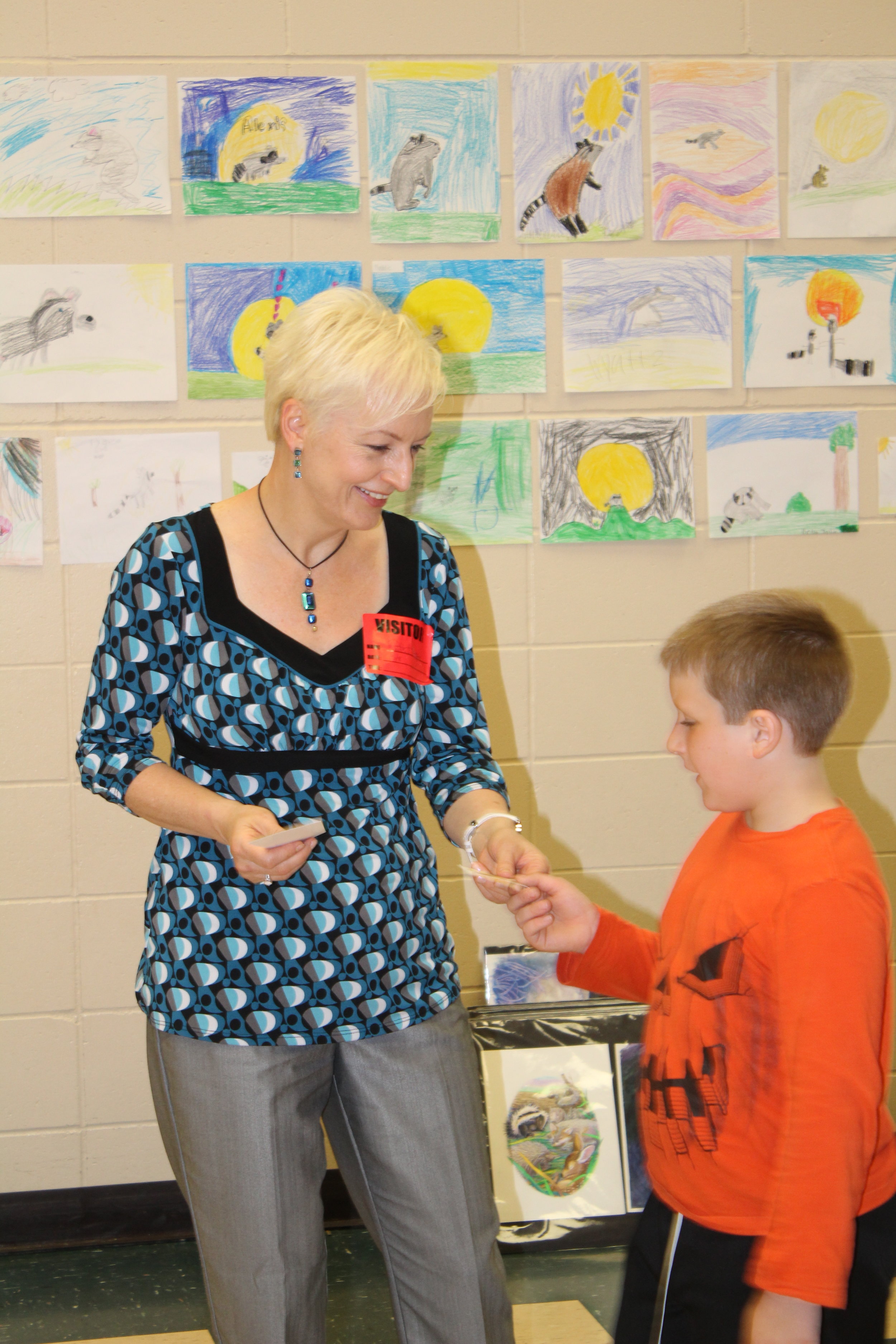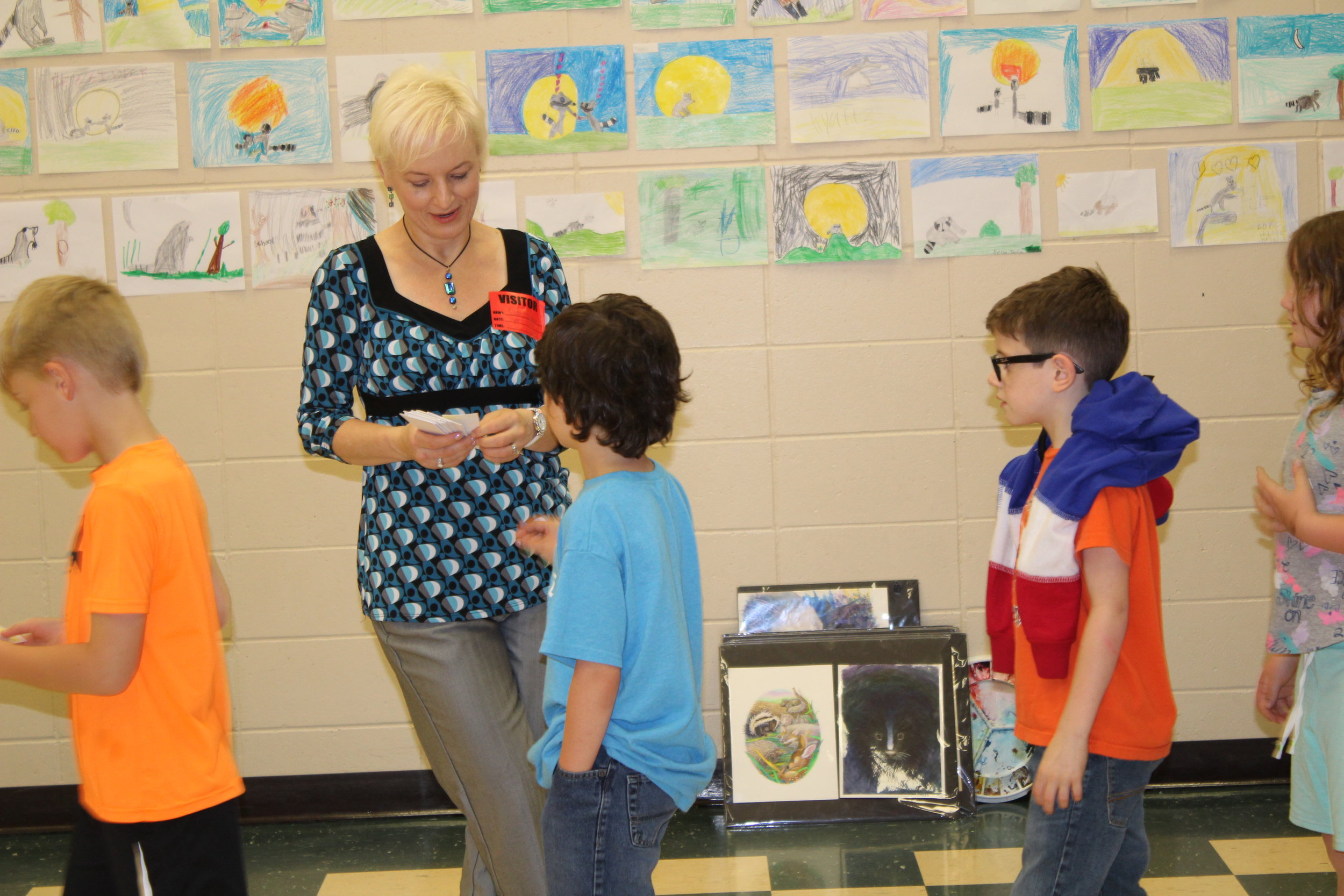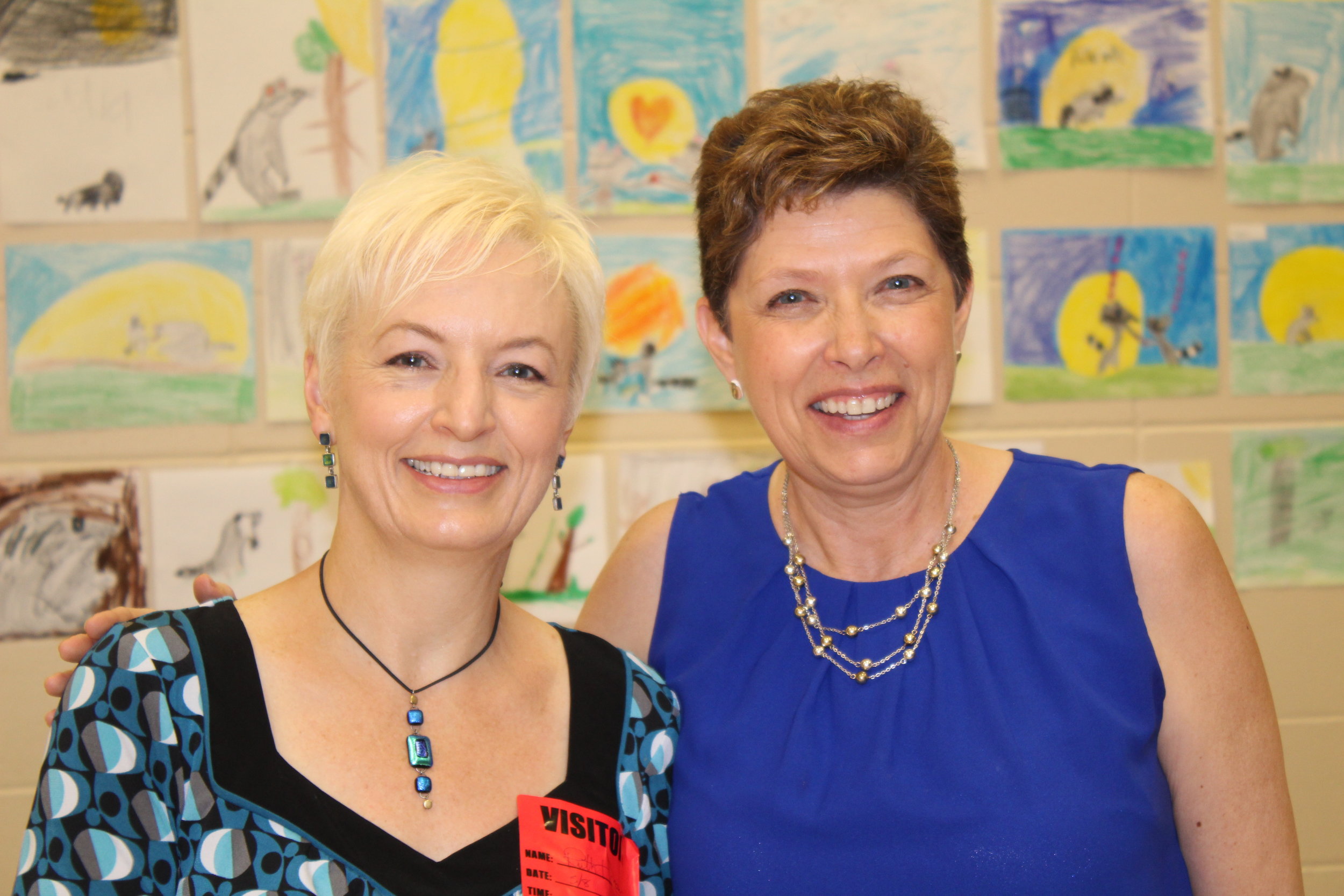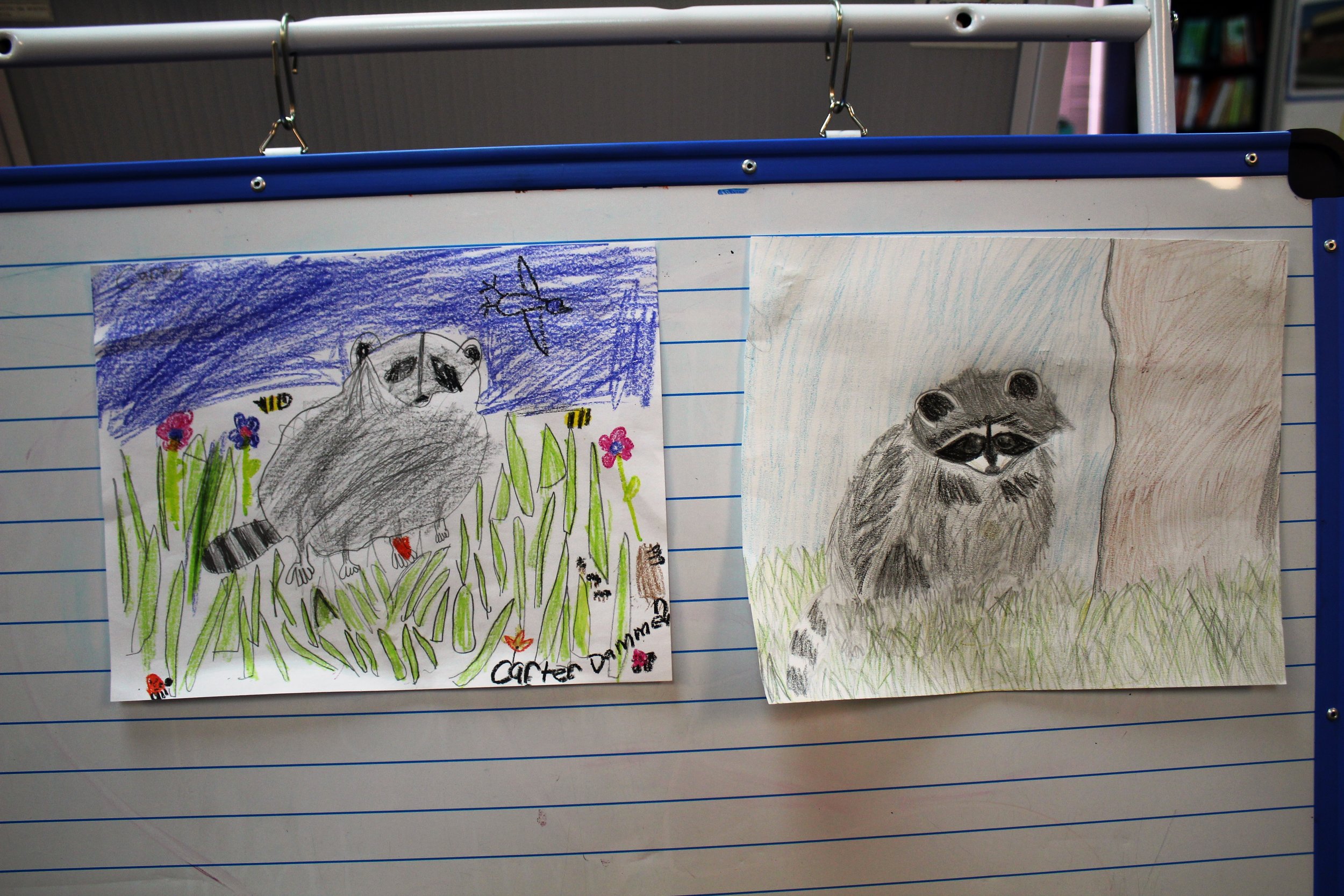Oh, the wondrous world of books!
Explore ways books are uniquely written & illustrated | Discover your brain’s learning style, why everyone should doodle!
SCHOOL VISITs -
As a K-6th art teacher for 4 years I authored an accredited art curriculum based on the American Art Education Association’s standards, to join seamlessly into every grade’s quarterly units of study. I was a graphic artist and designer for 7 years, which poured a solid foundation for understanding composition and color. My 7th book will be out early 2024, plus I’ve written two not published yet.
I believe in Drawing With Children, by Mona Brookes (highly recommend!) – and all the evidence along those lines that: Little brains develop better and grades increase across the board by 20% if taught art (not a craft) every week.
Little brains learn best while MOVING - so you’ll find me a bit animated and asking students to move along with me - doing somatic calming exercises and drawing along. YES - for all sessions each child will need a clipboard and pencil for DOODLING.
KEY To know -
Cost of visits depend on size of audience, location of school, and length of presentations requested. Visits start at $600. Ideas for funding your school visit here!
Read recommended books and discuss ahead - it’s the single most important thing to do to make my time and their learning meaningful. See my sheet with links to activity guides and kits (some pretty cool stuff!) on publisher’s websites - click here for Reading List & Activities sheet. Consider preparing a list of questions - perhaps bait me with somethings funny!
Plan themed projects - both art and writing. Fill the walls with a theme and write stories around it! Example: certain animals, birds, or insects from any of my books. Line it up with your core curriculum units.
Idea! Contact a local newspaper and/or have school newspaper write a story on the visit - this gets the kids even more excited, and boosts community confidence in your school! Especially for funding.
Purchase books easily with a QRCode. I will sell books at least 2 weeks ahead of my visit, by sending your school a flyer for parents to easily order online. See a sample here. I will bring books already autographed to each child’s name and delivered to their teachers! SO much less school hassle :)
After my visit nothing will make my heart happier than getting a quote or letter from your classes/school!
Want more? Email me at ruthpaints@gmail. Let’s chat! Detailed listing of my books HERE.
session ideas -
OUR TALENTS (K-3)
We ALL have one. They’re like a dog or a plant you must feed or they don’t make it – so be ‘dogged’! (determined, persistent). Show my childhood sketches, tracing to learn, entering contests, taught myself to paint. I observed and practiced. Feature many types of jobs and talents…encourage all to practice and work hard at whatever it is they love. Students will doodle, I’ll do a demonstration from their suggestions, then we’ll draw something together.
HOW PICTURE BOOKS are ILLUSTRATED (2-6)
Process from A to Z. Show samples - begin with manuscript, read/read/read, get lots of books and collect pictures, sketch a ton, draw a thumbnail storyboard w/ideas (sometimes 5-6 ways), see if publisher likes them. If they do draw them bigger and send in, then full size w/details. Think about colors. Once approved, color in a storyboard sheet with colors you’ve chosen, start tracing pages to watercolor paper, use masking fluid, paint backgrounds first following your color guide sheet. Then the hard work and persistence starts. Stay up late nights, suck on chocolate, and pour down coffee to finish, lol! I will bring storyboards, drawings, and original paintings to view.
COLOR of PICTURE BOOKS – do you feel it? (4-6)
Different colors make you feel certain ways – explore red, orange, yellow, black, blue, green, purple (alarm colors, food/hungry colors, loyal/calm colors, etc.). Books can make you feel strongly by just their colors (examples). Show how I chose primary colors for The Kissing Hand – my 4 tubes – and why. Tell how there is NO black in nature – only lots of dense colors together (Sassafras in the log). Most artist’s shade with a cool color or complimentary color (examples). IF school cannot provide a set of above colors (crayons, colored pencils or markers), students draw a pattern for each of 3 primaries and incorporate those into a drawing together.
MATH in ART (4-8)
Power of three. Explore dynamic rule of thirds: draws viewer’s eye into and around, embrace blank/resting space. Draw planes on a landscape, hot/interest spots, organize characters on the page, draw human proportions - our faces are divided into three, bodies are all math! Show use of 3 colors, 3 in fashion, photography, and architecture. In writing stories, any idea - anything - presented in threes is more effective. Stories have a beginning/middle/end, and three central characters, etc. Our brains are wired to respond to THREE. Practice by writing a sentence or two using the rule of 3 in different ways.
THREE DIFFERENT WAYS (4-6)
Writers write and illustrators write/paint books using three basic types of visualizing to put a book together. Our brains are wild! Some authors imagine a whole story and plot, some write short stories and connect them, others follow the protagonist to write a story. Some artists/writers write the story first and then illustrate, some draw many pictures first, then fill in words, other juggle words with images to make a whole. If time permits we will explore these methods in brief together.
DOODLE to LEARN (K-6)
Listening to and watching a teacher write isn’t enough for most growing brains. I’ll share different learning styles and facts about writing vs. computer: we are wired to write/draw with our fingers. Draw and doodle along as we explore ways to remember tough subjects at school - whether decorating a word, or diagramming, or even doodling a pattern while listening - all can inset learning deeper into our memory. Writing/doodling widens the playing field, enlarges the brain’s capacity for spacial and broader thinking, and opens the door to bigger and better ideas, plus deepens memory - while experiencing the joy and relaxation of PLAY with a pencil. Doodling required.
CHARACTER DEVELOPMENT
Students pick a character to draw and together we’ll draw a ‘character bible’ - drawing it in many poses, directions. Then the unexpected - draw it with something or someone surprising, or doing something unexpected. Write a ‘character bible’ based on my ‘either/or’ questions about their character. After getting to know their protagonist, draft and draw a short story idea.
MY PRESENTATION REQUESTS - Setup to run a PowerPoint, a clicker, lapel or head mic (so my hands are free to draw!). I will upload the presentation to a Google drive link you send me.
what they say ———————
Awards Night, IowA Young Author's Contest, Midlands Reading Council
“It was SO fun congratulating the young authors from last night’s Awards event you spoke at, and while they were in the hall waiting afterwards, overhearing talk about YOU! I think it's safe to say we have some inspired little writers and illustrators.” - Dani Woodman, Glenwood Community School District
Northeast Elementary School Visit, Glenwood, IowA
“Ms. Harper's visit widened the eyes of all of the students. Her description of the process of illustration coupled with the message that kids can be or do anything they choose was encouraging, entertaining and fascinating. She was receptive to and respectful of questions from students and teachers alike. Come back soon!” - Mary Finn, K-2 Special Education Teacher.
Northeast Elementary STUDENT CONTEST: Winners are at the end. Just LOOOK at all the fabulous art the students made!!! Ghaaah!! The skill and cuteness is overwhelming!! (click the right arrow for tons more)


